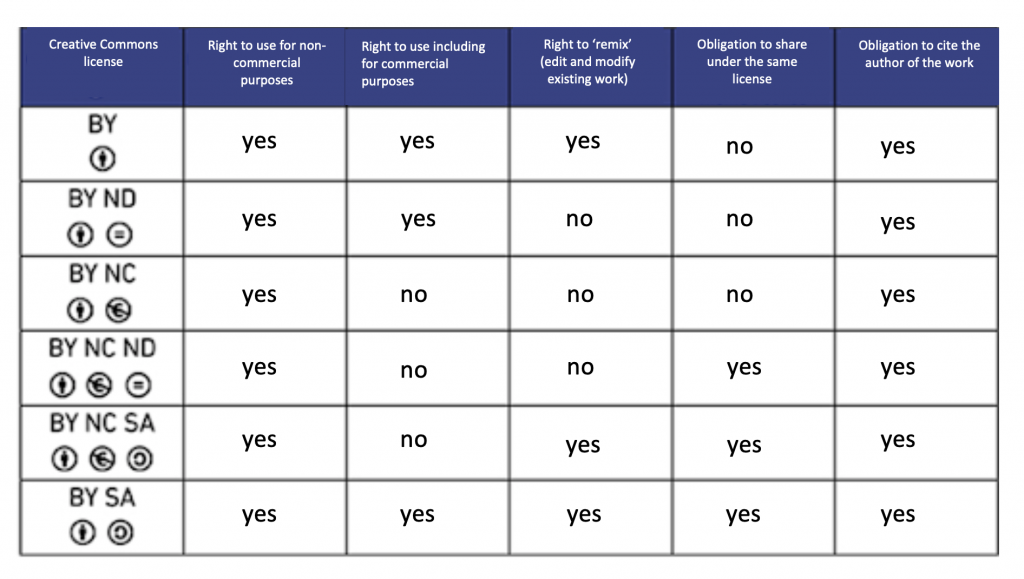This document contains background information for facilitators before they run the workshop with participants. It helps to understand the different kinds of copyright licenses that exist on the internet and provides links to possible activities to use for workshops.
General Objective
Preparation time for facilitator
Competence area
Name of author
Resource originally created in
What's an open license?
An open license allows anyone to use, edit, reuse and redistribute a work. There are different types of open licensing including free and open licenses and free distribution licenses. Amongst the most common are Creative Commons licenses.
Creative Commons licensing can be used to attribute certain rules to using online works. This consists of combining the following elements:
- The attribution of a work to an author
- Authorisation to modify a work
- The obligation to share work in the same conditions
- Authorisation of commercial use of a work
Here is a quick visual summary of the symbols and rules implicated by Creative Commons licensing systems.
What is copyright?
Copyright comprises the totality of rights attributed to the author of a work (or copyright holders more broadly, for example an inheritor) when they decide to publish a work (book, painting, video, photograph, etc.).
The legal concept of copyright began in Europe with the advent of printing and mass publishing. This evolved significantly with the development of photography and cinema, and later with the democratisation of digital technology in terms of a publishing platform.
It confers moral rights, which ensure the author is recognised as the creator of a work, and legal ownership, which allows copyright holders to pursue economic gain from their work.
The author can therefore choose to confer on their work one of the following systems:
- All rights reserved
A work’s creator can decide to attribute no rights of reuse by indicating ‘all rights reserved’. This means that no one can use, copy, reproduce, publish, send, distribute or edit the work in any way, without the written permission of the author.
- Public domain
Works that appear in the public domain are not subject to restrictions regarding use and reuse. The work can be reused and distributed freely without any condition. These works can be accessed freely and without limits because the author decided as such or because they are no longer protected by copyright because it has expired. In the US and EU, the copyright expires 70 years after the death of the creator. It is for this reason that Disney has been engaged in a legal battle for 90 years to preserve copyright on its logo so that it does not fall into public domain.
